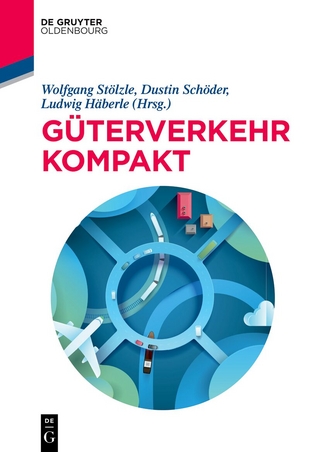
Distribution Planning and Control
Kluwer Academic Publishers (Verlag)
978-1-4020-7686-2 (ISBN)
- Titel erscheint in neuer Auflage
- Artikel merken
When work began on the first volume ofthis text in 1992, the science of dis- tribution management was still very much a backwater of general manage- ment and academic thought. While most of the body of knowledge associated with calculating EOQs, fair-shares inventory deployment, productivity curves, and other operations management techniques had long been solidly established, new thinking about distribution management had taken a definite back-seat to the then dominant interest in Lean thinking, quality management, and business process reengineering and their impact on manufacturing and service organizations. For the most part, discussion relating to the distri- bution function centered on a fairly recent concept called Logistics Manage- ment. But, despite talk of how logistics could be used to integrate internal and external business functions and even be considered a source of com- petitive advantage on its own, most of the focus remained on how companies could utilize operations management techniques to optimize the traditional day-to-day shipping and receiving functions in order to achieve cost contain- ment and customer fulfillment objectives.
In the end, distribution manage- ment was, for the most part, still considered a dreary science, concerned with oftransportation rates and cost trade-offs. expediting and the tedious calculus Today, the science of distribution has become perhaps one of the most im- portant and exciting disciplines in the management of business.
Unit 1. Defining the Supply Chain Management Environment.- 1 The Rise of Supply Chain Management.- Advent of Supply Chain Management.- Evolution of Supply Chain Management.- Defining e-SCM.- SCM and Logistics.- Summary.- Questions for Review.- References.- 2 Components of Distribution Management.- Defining the Term "Distributor".- Characteristics of the Wholesale Distributor.- Role of the Distribution Function.- Understanding the Wholesale Distribution Industry.- Summary.- Questions for Review.- References.- Unit 2. Top Management Planning.- 3 Business and Strategic Planning.- Defining Business Goals and Strategies.- Developing the Business Plan.- Summary.- Questions for Review.- References.- 4 Forecasting in the Supply Chain Environment.- Forecasting - An Overview.- Forecasting Types.- Managing the Forecast.- Summary.- Questions for Review.- Problems.- References.- 5 Demand, Operations, and Channel Planning.- Demand, Operations, and Channel Planning - Overview.- Elements of Marketing Planning.- Elements of Sales Planning.- Elements of Production Planning.- Elements of Logistics Planning.- Elements of Supply Channel Planning.- Integrating Demand, Operations, and Channel Plans.- Summary.- Questions for Review.- References.- Unit 3. Distribution Operations Planning.- 6 Managing Supply Chain Inventories.- Elements of Supply Chain Inventory Management.- Principles of Supply Chain Inventory Management.- The Inventory Management Process.- Inventory Costs.- Inventory Control.- Summary.- Questions for review.- Problems.- References.- 7 Replenishment Inventory Planning.- Inventory Planning Techniques.- Inventory Replenishment Techniques - An Overview.- Defining the Order Point.- Order Quantity Techniques.- Just-In-Time.- Inventory Replenishment Planning Process.- Inventory Operations in the Supply Chain Environment.- Summary.- Questions for Review.- Problems.- References.- 8 Distribution Requirements Planning.- Problems with Statistical Techniques.- Historical View.- DRP Processing.- DRP in a Supply Chain Environment.- DRP Planning Process.- Detailed Logistics Capacity Planning.- DRP and Supply Chain Management Systems.- Summary.- Questions for Review.- Problems.- References.- Unit 4. Distribution Operations Execution.- 9 Customer Relationship Management.- Defining Customer Relationship Management.- Demand Management.- Order Management and Fulfillment.- Customer Care Management.- The Internet-Enabled CRM Environment.- Summary.- Questions for Review.- References.- 10 Supplier Relationship Management.- Defining Purchasing.- Defining Supplier Relationship Management.- Anatomy of Purchasing Strategy.- Purchase Order Management Process.- Performance Measurement.- Impact of e-Business on SRM.- Summary.- Questions for Review.- Problems.- References.- 11 Warehousing.- Defining Warehousing.- Developing Warehouse Strategies.- The Warehouse Management Process.- Trends in Modem Warehousing.- Designing the Warehouse Network.- Warehouse Layout and Equipment.- Summary.- Questions for Review.- References.- 12 Transportation.- The Scope of Transportation.- Modes of Transportation.- Types of Transportation.- Transportation Management Process.- Issues Confronting Transportation.- Logistics Service Providers.- Summary.- Questions for Review.- References.- Unit 5. International Distribution and Distribution Information Technology.- 13 International Distribution.- Forces Driving Globalization.- Developing Global Strategies.- Channel Strategies.- Managing Global Distribution Networks.- International Transportation and Warehousing.- International Purchasing.- Today's Global Trade Environment.- Summary.- Questions for Review.- References.- 14 Information Technology and Supply Chain Management.- Foundations of Enterprise Information Technologies.- Configuring the EIS Solution.- Information Technology Solutions.- Implementation Issues.- Summary.- Questions for Review.- References.
| Reihe/Serie | Chapman and Hall Materials Management/Logistics Series (Closed) |
|---|---|
| Zusatzinfo | biography |
| Sprache | englisch |
| Maße | 155 x 235 mm |
| Gewicht | 1403 g |
| Einbandart | gebunden |
| Themenwelt | Wirtschaft ► Betriebswirtschaft / Management ► Logistik / Produktion |
| ISBN-10 | 1-4020-7686-X / 140207686X |
| ISBN-13 | 978-1-4020-7686-2 / 9781402076862 |
| Zustand | Neuware |
| Haben Sie eine Frage zum Produkt? |
aus dem Bereich


